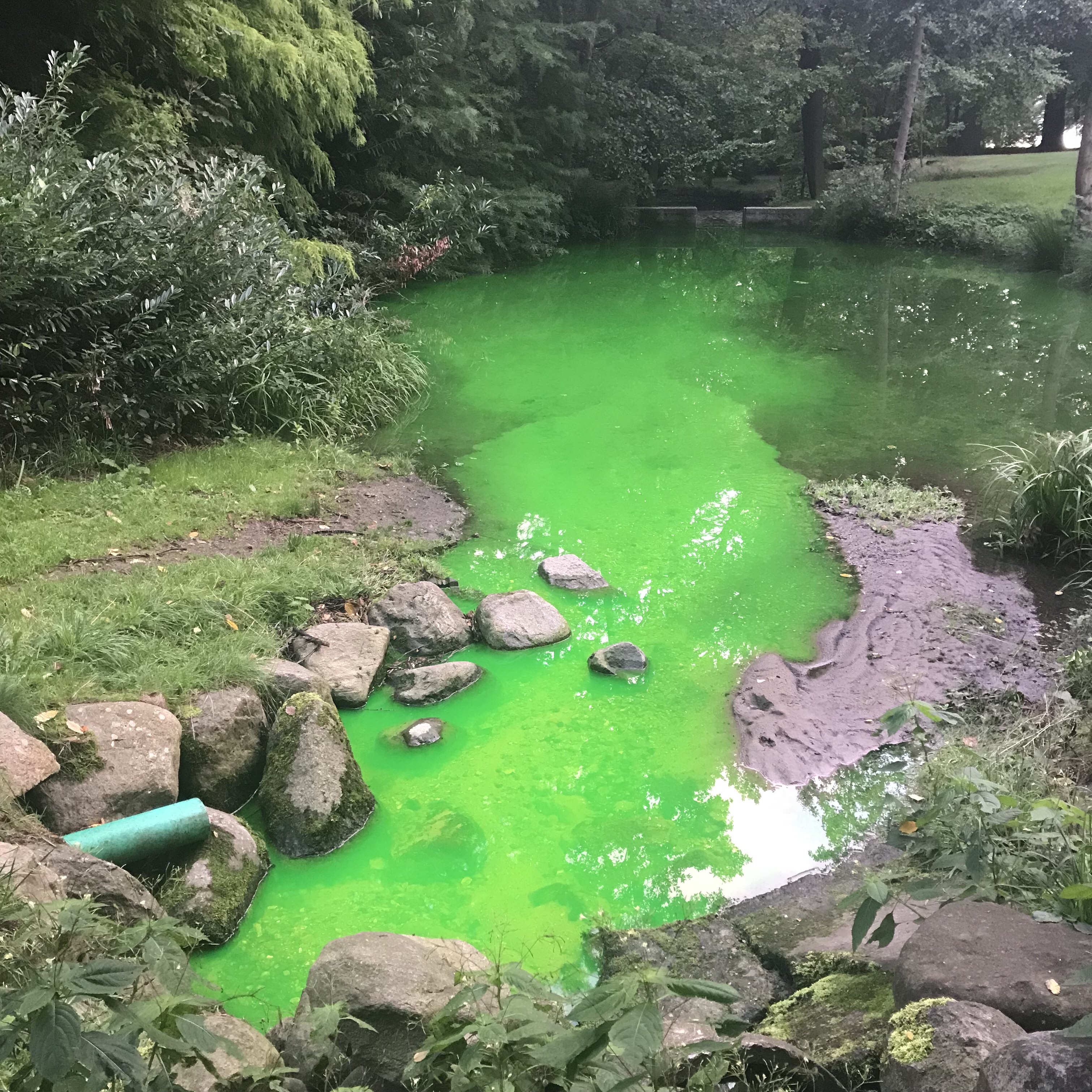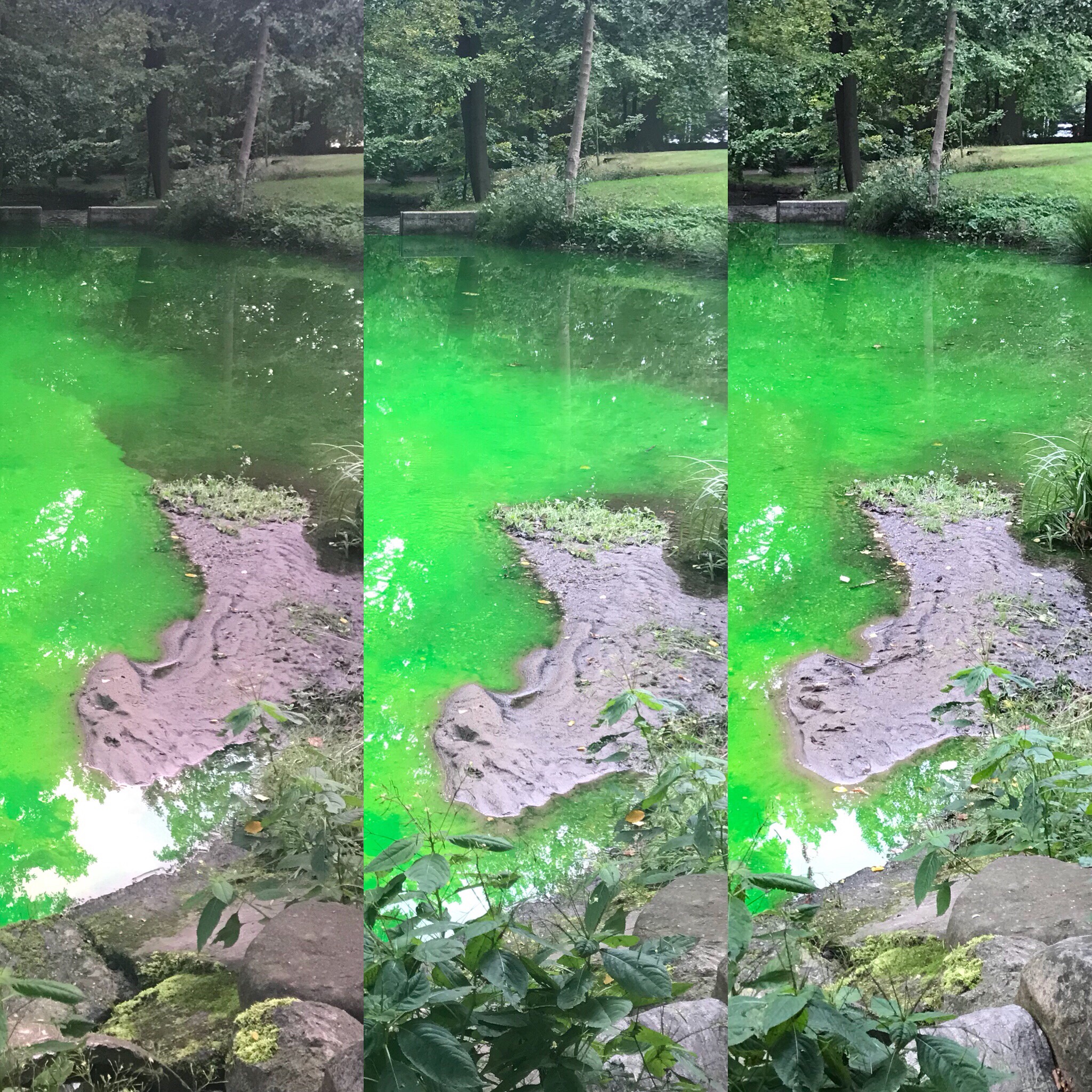
Dye tracers “in the wild”
You know I love dye tracers (remember the beautiful fluorescent green we used in the 2017 experiments in Grenoble, when we got to play with the 13m diameter rotating tank?) but today I found some “in the wild” again — on the way back from my morning run & swim no less, in Kiel’s Forstbaumschule.
I’ve seen a dye tracer here several times before, and it’s basically just an indicator for a leak in the district heating (and everybody claims that it isn’t harmful to the environment despite its color).
Dye as a flow tracer
Spotting leaks would be very difficult if you just had normal water running into places where there is other normal water. Last winter you could clearly see that the dyed water was quite a lot warmer than the rest because it melted ice away where it went, but at temperatures like to day you might be able to see a thermal signature with thermal imaging equipment, but it is nowhere near as obvious as during winter.

But today my timing was lucky: The pipes can’t have been leaking for very long yet, because there were clear boundaries visible between the “old” lake water that wasn’t dyed yet, and the plume of dyed water entering into the lake and leaving it on the other side.
Dye as age tracer
So in a way the dye also acts as age tracer (since there are currently no other inflows into that lake. It would obviously be different if there were): the “old” water is still dye-free, whereas the “young” water is bright green. And then there are the regions where older and younger water mix and the color isn’t quite as intense.

Dye to visualize mixing
On the boundaries between the dyed water and the old lake water you see mixing in form of tiny eddies, and I’m pretty sure that when I go back this afternoon, the whole lake will be this awesome fluorescent color. And I am curious to see if there will still be flow structures visible or if it’ll all just be bright green :-)
Update: 2 hours and 11 hours later
And I went back. Twice.
Below you see how the coloring changes at the inflow mixes more and more with the lake water: left the picture taken at 7:15 am, then 9:15 am, then 7 pm. Fascinating! :)

Fluorescent night walk — following the stream through the lake into Kiel fjord! | Mirjam S. Glessmer says:
[…] green fluorescent stream! (Don’t know what I am talking about? Check out the previous posts (post 1, post 2) on why there is fluorescent dye in a lake across my street and why that is […]
It’s all about the right equipment: That’s why I now own a UV lamp! I see a lot of fluorescent tracer spotting in my future! | Mirjam S. Glessmer says:
[…] Before I start gushing about my awesome new UV lamp (thanks for encouraging that purchase, Uta! :-)), some other updates on the state of green in the park across the road from my house (don’t know what I am talking about? Check out previous posts on the fluorescent dye tracer). […]
The first autumn storm and its impact on dye tracer and water level | Mirjam S. Glessmer says:
[…] Last night it rained a lot. So the first thing to do this morning was to check what that had done to my green lake! […]
Did you know uranine doesn’t fluoresce when frozen? | Mirjam S. Glessmer says:
[…] had frozen a second tray* with ice cubes dyed with uranine (you know, the green stuff I found in the lake near my house the other day?). Like the other ones, they clearly froze […]